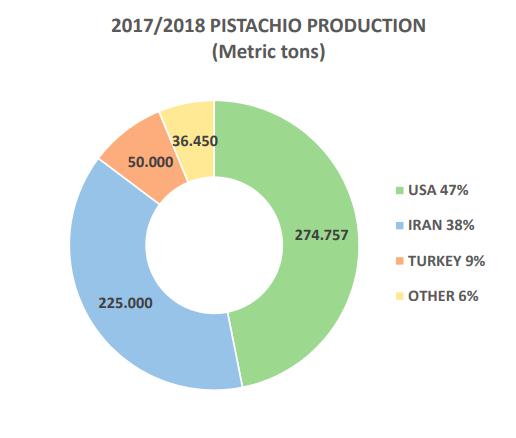Pistachio
Pistachio trees originally come from the Middle East, Persia (Iran), Syria, Turkey, and Greece where dry lands and desert climates are available. Pistachio trees have been cultivated for more than three thousand years. Persian high positioned desert regions with abundance of sunshine are ideal for growing pistachios. Some deserts located in the south of Iran such as in the Kerman province exceed two hundred thousand hectares with perfect soil for the growth of pistachio trees. Pistachio trees planted in orchards need approximately seven to ten years to reach maturity.
Between Iranian people pistachios are known as “Green Gold” and are considered as an important commodity in both nutritional and economical forms. Pistachios occupy a special place in the heart of every Iranian. Pistachios can be found in every Iranian household because they have become a part of the Iranian culture by bringing families together and are seen a delicacy being offered to a guest who may just drop in for a visit and a cup of tea.

WHY IRANIAN PISTACHIO?
Currently Iran tops the list with the high quality production of 472,097 metric tonnes. Iranian pistachios offer various advantages that set them apart from competitors.. Additionally, higher meat content offers better value for money. Iranian pistachios have a world-famous taste that is unrivalled. This taste advantage is enhanced by roasting Iranian pistachios at higher temperatures, made possible by higher unsaturated oil content. This high temperature roasting eliminates any bacterial contamination, which may be present in raw product. The following items are the major advantages of Iranian pistachios:
Iranian pistachios have a high kernel to in-shell ratio, meaning you are buying a higher amount of the edible kernels for the same amount of pistachios you buy.
Due to their higher unsaturated oil content, Iranian pistachios have the capacity to be roasted at between 160 to 180°C (hot air stream temperature). Good roasting brings out the unique flavor of the nut, while eliminating any live bacteria from the roasted product. It is obvious that lower roasting temperatures of around 120°C recommended by some suppliers will not achieve the two above benefits.
Over a long period, consumers around the world have shown a preference for the taste of Iranian pistachios. All four commercial varieties of Iranian pistachios each have a rich, unique and distinctive flavor. In this regard, Iranian pistachios offer a combination of unparalleled flavors which gives the consumer choice and variety.
The large number of producers, buyers, exporters and importers of Iranian pistachios makes for conditions of perfect competition in the market. As a result, fairer trading opportunities present themselves to those engaged in buying and selling Iranian pistachios. In the absence of conditions of perfect competition, the market may face price fixing and market manipulation by influential players.
Iranian Pistachio Types

Long Type
Akbari belongs to the long type of Iranian pistachios, it is also known as the most expensive and exclusive type among all Iranian pistachios. One of the characteristics that differentiate this type to the other Iranian pistachios is the height of head and is equal in length. Ahmad Aghaei (AA) is also one of long type of Iranian pistachios and the characteristics of this type can be described as long shape but the lengths size is not always equal. This type Iranian pistachio is the most favorable type in eastern Asia in particular China also in India. Badami is another type of long Iranian pistachios, and in terms of length it is shorter than Ahmadaghaei, and particularly its kernel is very similar to almond.
Fandoghi (Round)
This type of pistachio has round shape and its different than long pistachios, its length is shorter and smaller compared to other type of pistachios. Fandoghi pistachios are the first type in terms of exportation, due to being reasonable in price. Sirjan, where RPC is located at is recognized as the pivotal area where Fandoghi pistachios are growing.
This type of pistachio is one of the principles of traditional export products of Iran. Round pistachios are high in protein content and nutritional value. Pistachio has always been the prime non-oil export product of Iran.
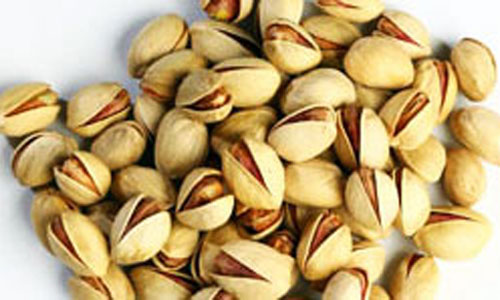
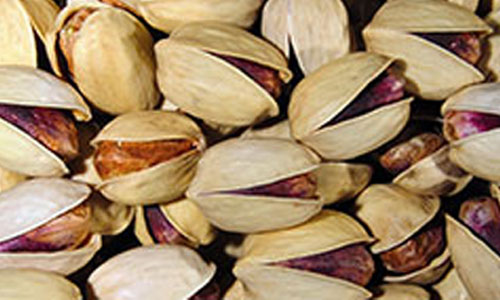
Kallehghouchi (Jumbo)
Jumbo pistachios are larger and longer compared to round pistachios. Kallehgouchi pistachio has a long history in cultivation as its been growing for more than 4000 years.
The present distinguished excellent situation of Iranian Jumbo pistachio, is the result of Iranian farmers and growers perfect ability. Existing researches show, more than 70% of worlds’ total Jumbo pistachio production is in Iran which in some years touched a peak annual production of 300,000 m/t.
Closed shell pistachio
This type of Iranian pistachios is naturally closed and has not opened yet. Through process of shelling closed shell pistachios become to natural kernels through a mechanically procedure. All type of pistachios has closed shell type too and the yield kernels are 48-50%.
Approximately 15,000 tons of closed shell pistachios export to different areas of the world from Iran. The main market for this type of pistachio is the far east including countries such as: China, Taiwan, Hong Kong, Malaysia, Indonesia and etc.
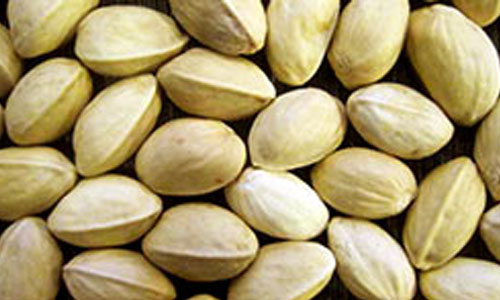
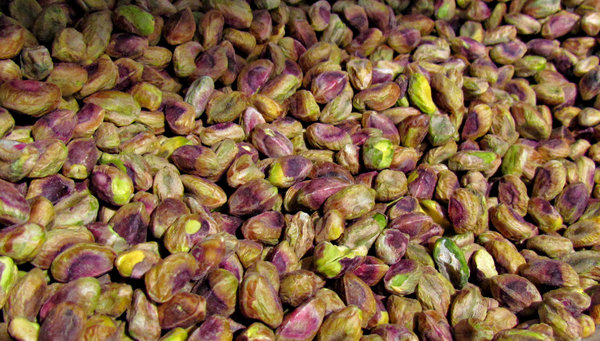
Kernel pistachio
Pistachio kernels normally come from two types of pistachios, closed shells pistachios, and open shell pistachios, and kernels can be from any type of pistachios. Open shell pistachio kernels are rich in color and size. This type of Iranian pistachio kernels are taken from open shell pistachios, which are cracked by hand, hence the procedure takes longer time also the price is higher compared to closed shell kernels. This type is suitable for confectionaries, particularly where pistachios will be used as it is without blending or making it to powder, for instance, Baklava or Turkish delights.
Iranian pistachios production has been 173,000 tons in the year (2017-2018) and Iran’s exports to China, the European Union and Turkey reached to 150 thousand tons in year (2017-2018) .
